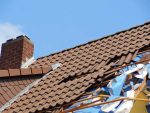First steps after water damage: what every homeowner should do
In Tampa, FL, where the humid subtropical climate exacerbates moisture retention, understanding how to handle home water damage is crucial. Whether the damage comes from seasonal storms, common plumbing failures, or unforeseen leaks, knowing the immediate steps to take can significantly mitigate the extent of the damage. This comprehensive guide is designed to help Tampa residents navigate the crucial first actions following water incidents, ensuring effective management to maintain the integrity and safety of their homes.
Safety first: assessing the risk
Before diving into any cleanup efforts, ensure the safety of everyone in the household. Check for signs of structural damage, like sagging ceilings or compromised walls, that could pose immediate risks. Turn off the main power if there are any electrical devices or outlets affected by water. Avoid using electrical appliances and be cautious of slippery surfaces. If the water source is contaminated, such as from sewage backups, prioritise personal safety by avoiding direct contact with the water.

Contacting professionals
Once the area is deemed safe, promptly contacting professionals who specialise in water damage restoration is crucial. Experienced professionals, such as a Tampa water damage company, have the tools, knowledge, and experience to effectively assess and address the damage, reducing the chances of long-term issues like mold growth and structural deterioration. Quick action can also prevent further damage, making it essential to reach out to experts who can arrive quickly and start the recovery process.
Documenting the damage
As you wait for the professionals to arrive, start documenting the damage if it’s safe to do so. Take photos and videos of the affected areas, capturing details of the water’s extent and impact on furniture, walls, and floors. This documentation will be invaluable for insurance claims and future reference. Be thorough and include serial numbers or any unique identifiers of damaged items when possible.
Initiating water removal
If the amount of water is manageable, you can begin removing it while waiting for professional help. Use buckets, towels, mops, or a wet-dry vacuum if available to remove standing water. For larger floods, this step is best left to professionals equipped with powerful water extraction units. Starting the drying process as soon as possible is critical to prevent mould and further water absorption into floors, walls, and furniture.
Enhancing ventilation
Improving airflow in the affected area can aid in drying and prevent mould and mildew formation. Open windows and doors to allow fresh air to circulate if weather conditions permit. Use fans to further enhance air circulation, and dehumidifiers to reduce moisture levels in the room. Remember, adequate ventilation is key in speeding up the drying process and helping clear out any odours caused by water damage.
Managing insurance claims
Navigating the insurance claim process is a critical step following water damage. Contact your insurance provider as soon as possible to report the damage. Provide them with the documentation and visual evidence you’ve collected. Understand your policy’s coverage—what is and isn’t covered can vary significantly. An adjuster may visit your home to assess the damage. Be prepared to discuss your claims and present your evidence. Keep records of all communications with your insurance company as this could be crucial for resolving potential disputes.
Preventing mould growth
Mould prevention should start immediately after the initial cleanup, as mould can begin to grow within 24 to 48 hours in damp environments. After removing standing water, focus on drying out the area thoroughly. Professionals may use high-grade dehumidifiers and air movers to accelerate the drying process. Regularly inspect the space for mould growth during and after the drying process. If mould is detected, a professional mould remediation company should be engaged to ensure it is properly and safely removed.
Salvaging and cleaning property
Determine which items can be salvaged and which should be discarded. Non-porous materials can often be cleaned and disinfected. Porous materials that have absorbed water might need to be discarded to prevent mold and mildew. Professional cleaning services can help restore some items with specialised cleaning methods that prevent further damage. Textiles, such as carpets and curtains, might require specific cleaning techniques to effectively restore them without causing additional damage.
Repairs and reconstruction
After the cleanup and drying process is complete, assess the damage to structures and fixtures. Some materials, such as drywall and insulation, may need to be replaced if they’re water-damaged. A professional contractor can help determine the extent of the structural repairs needed and ensure that your home is restored to a safe and livable condition. Ensure that all repairs meet local building codes and standards.
Preparing for Future Water Damage
Once recovery and repairs are complete, take proactive steps to prevent future water damage. Consider improvements like better waterproofing, upgrading gutters and drainage systems, and installing water detection systems. Regular maintenance of plumbing and HVAC systems can also help prevent future incidents. Learning from past incidents can provide valuable insights into vulnerabilities in your home that, once addressed, can significantly reduce the risk of future water damage.
Dealing with water damage can be overwhelming, but taking structured, informed steps can mitigate the impact and help ensure your home recovers fully. Prioritising safety, calling in professionals like a reputable Tampa Water Damage Company, documenting everything for insurance purposes, and addressing moisture immediately are crucial in the immediate aftermath. Following through with a thorough cleanup, mould prevention, and careful repairs will protect both the value of your home and the health of your family. Lastly, investing in preventive measures can safeguard your home against future incidents, providing peace of mind. Remember, the key to effective water damage recovery lies in swift actions, detailed attention, and proactive future planning.



